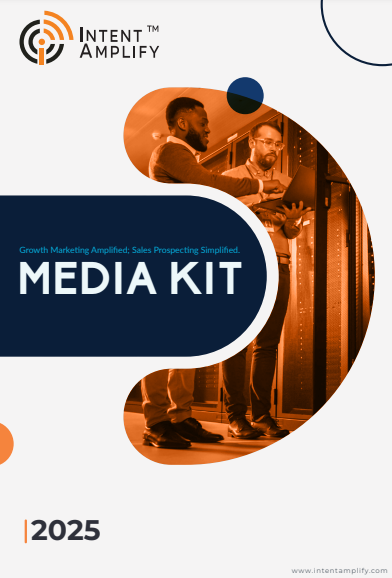
How to Master Cross-Channel Marketing for Maximum ROI
- Last updated on: October 2, 2025
In a hyper-connected B2B environment, buyers get in touch with brands via various channels. Email, social media, webinars, content syndication, and account-based campaigns are all means by which prospects expect to be engaged seamlessly.
Cross-channel marketing is more than just a buzzword. It is a tactical plan that aligns the messaging with every interaction. The main benefits of this are that pipeline velocity is increased, lead quality is enhanced, and ROI is maximised.
Cross-channel strategies are a must-have for tech, SaaS, fintech, and cybersecurity companies. Buyers in these areas go through a lot of research before they decide to purchase. They read a lot of the thought leadership content and compare several alternatives before making a final choice.
Why Cross-Channel Marketing is Important in B2B
1. Buyers are Present on Various Platforms
Within a B2B context, there is rarely an instance where decision-makers only receive one email, get exposed to only one advertisement, or attend just one webinar. They tend to use search, social, display, content platforms, and video altogether. In case your message is not consistent and context-aware, then you lose your effect.
2. Integration is the Key to Efficiency
In case the various channels are run separately, you will be wasting your budget and creating message discord. Having unified campaigns at your disposal will let you reuse the assets, support your messaging, and eliminate the points where your audience might experience friction.
3. Advanced Understanding Leads to Greater Intelligence in Decision Making
With cross-channel campaigns, you get access to comprehensive datasets. This enables you to recognise what sequences or combinations perform the best, and you can direct your efforts to the paths with the highest ROI as well as change your spend dynamically.
4. Better Conversions + Shorter Sales Cycles
The cross-channel marketing elevates the level of engagement, creates credibility, and pushes prospects forward through the process by guiding them through a consistent path as opposed to the work of several separate campaigns, which in many cases is slower.
Methods of Cross-Channel Marketing Strategy
You must have a plan that is built on alignment, data, and empathy for the buyer to achieve your goals.
1. Formulate Clear Objectives as Your First Step
It may be an influence on pipeline, closed-won deals, account engagement, or deal velocity. What is success? Link objectives to revenue and not to volume only.
2. Buyer Journey Mapping (for your verticals)
Buyers in tech, fintech, or cybersecurity, for example, usually have long and complicated buyer journeys. Define stages (Awareness,Consideration, Decision & Post-sale), and mention at each stage the channels your audience uses.
3. Segment and Prioritise
Prospects differ by the degree of their potential. Segment with firmographics (industry, size, geography), technographics, role, and behavioural signals. Points out the key accounts for ABM and the general segments for demand gen.
4. Choose Channel Mix Based on Data
While some channels increase the audience size, others focus on the quality of the conversation. The following are common B2B channels that you should evaluate:
- Email / Marketing Automation: the backbone for nurture flows and deals
- LinkedIn & B2B Social: for thought leadership, retargeting, ABM outreach
84% of B2B buyers use social media during purchase decisions, and 4 out of 5 social leads come from LinkedIn.
- Content Syndication & Native Advertising: to gain more target audience members
- Display / Programmatic & CTV: where one can see the ads and retarget across formats
- Webinars, Virtual Events & Podcasts: are content and engagement-intensive
- Retargeting / Custom Audiences: to bring users back to the site
The magic is, however, in the interplay – how one channel supports another.
5. Establish Messaging Cohesion
Channels aside, your value proposition and story have to be the same, but also adaptable to every channel. Keep brand voice, main features, and conversions high. Also, modify format, training, and effect if necessary (e.g. short videos vs. long research papers).
6. Ensure Data Integration & Orchestration
Every platform, from CRM, marketing automation, ad, and analytics, should be able to communicate with each other. Data should be centralised so that triggers, segments and reports reflect the journey of multi-touch. Without this, the concept of cross-channel falls apart.
Executing Cross-Channel Campaigns: Best Practices & Tools
Any planning at a high level is still only a plan in theory if it is not conducted with discipline. Implementing cross-channel campaigns in B2B brands is done this way.
1. Synchronise Your Cadence
It would be better if the campaign calendar were presented visually. You can stage launches of your wave; for instance, the display could be the first phase, the next could be a follow-up by email, and then retargeting could be the last phase. No isolated bursts or gaps. Instead of seeing channels as a conversation, don’t think they are parallel monologues.
2. Personalise Intelligently
You should leverage segmentation along with behavioural data (email opens, content downloads, site visits) to make the messages more relevant. Even personal touches like using the name of a content source can uplift the conversion rate of the marketing.
3. Adapt Content to Channel Formats
- Every channel comes with a unique set of limitations and expectations.
- LinkedIn / Social Ads: bite-sized insights, visuals, double-optin
- Email / Nurture: multi-step flows, progressive profiling
- Webinars / Podcasts: longer-form deep dives, interaction
- Display / CTV: visual stories, brief messages, sequential storytelling
Not only should each asset be a representation of your core story, but it should also be designed effectively.
4. Automate & Orchestrate Workflows
You can use tools like HubSpot, Marketo, Salesforce Pardot, etc., and ABM platforms such as Demandbase, Terminus, to do the following: sequence touches, trigger cross-channel actions, and manage account-level campaigns.
5. Monitor in Real Time
Build dashboards that provide multi-channel metrics such as impressions, click-throughs, conversions, journey progression. Look for anomalies or drop-offs and move immediately.
6. Test Everything & Iterate
Try out different subject lines, creative variants, sequence orders, channel combinations, and calls to action. A minor change can also reveal the different performance of various markets (North America, EMEA, APAC) you are catering to.
Measuring ROI: From Attribution to Insights
To win executive buy-in, you need rigorous measurement and attribution.
1. Define Core KPIs
Align your metrics to your objectives. Common KPIs include:
- MQLs / SQLs
- Pipeline influenced or created
- Deal velocity (time to close)
- Marketing-attributed revenue
- Cost per acquisition (CPA)
- Engagement metrics (CTR, dwell time, etc.)
2. Apply Multi-Touch Attribution
Due to very long B2B cycles, last-touch is completely insufficient. So, giving credit to multiple-touch or weighted models is the right way to distribute the value among all leading interactions.
3. Merge Data Sources
Combine data from CRM, marketing automation, ad platforms, and analytics tools into one unified reporting layer. This not only guarantees accuracy but also consistency.
4. Compare Spend vs. Return
Analyse the return on investment (ROI) for each channel by comparing the cost with the revenue contribution. Locate those channels where the performance is below the expected level and thus, redirect the money to the ones where you will get the most impact.
5. Build Executive-Friendly Reporting
Construct either dashboards or scorecards that reflect the top executives’ demands. Employ visuals (funnels, heatmaps) and metrics like pipeline growth, cost savings, and ROI exhibits to convince them of the investments made.
Advanced Strategies to Amplify ROI
Once you have your foundational execution successfully in place, these sophisticated manoeuvres can take your results to higher levels.
1. Deepen Integration with ABM
Think of your best accounts as mini markets. Publish your custom-made content not only through email but also on the web, social media, and even at events. Work with sales in such a way that each contact is the next logical step and that it is supportable.
2. Use Predictive & Intent Intelligence
Use predictive scoring and give intent signals to choose the correct accounts for heating up. Employ that understanding to make the cross-channel touches happen at the exact moment.
3. Sequential & Adaptive Paths
Try out different sequences of channels like content followed by an email, retargeting, and then a webinar. Change the next touch based on the behaviour of the prospect. The paths for dynamic journeys are better than the ones with rigid sequences.
4. Expand into Emerging Media
CTV (connected TV) is becoming a more and more powerful tool for B2B. Video is one of the most effective media. Besides that, you can also consider podcasts, interactive video, and audio branding for the respective vertical niches.
5. Optimise with Granular Testing
Carry out geo-split tests (e.g. North America vs APAC) to discover regional preferences. Keep track of the little metrics such as scroll depth, session duration, and content drop-off.
6. Reinforce Sales-Marketing Alignment
Regular joint planning is the main factor in achieving a single message, synchrony of timing, and flawless lead hand-off. Tight coordination is what executes ABM, especially.
Common Pitfalls & How to Avoid Them
1. Channel silos: Isolated teams or budgets result in fragmented campaigns. Along with that, you are no longer limited to small budgets because you will have one big budget to use for any channel.
2. Overcomplicating automation: Avoid creating overly complicated flows that are difficult to keep up with. Make it simple and increase your business gradually.
3. Underinvesting in attribution: If you do not use multi-touch models, you will simply undervalue the necessary channels.
4. Ignoring regional nuances: The differences in preferences of both messaging and channels are across NA, EMEA, APAC – so, testing and localising.
5. Lack of iterative feedback loops: Have the review stages built into your campaigns for continuous adjustment.
Lead With Integration, Measure With Purpose
Cross-channel marketing is not just about running advertisements on multiple platforms. It is a matter of integration, orchestration, and insight. When you coordinate strategy, implementation, and measurement, you transform channels into a system that is compatible and thus, pipeline growth is increased.
If you are running SaaS, fintech, cybersecurity, or a tech company, to be able to handle cross-channel marketing is to be there, to be stable and to be flexible—particularly in the three big global regions: North America, EMEA, and APAC. The profit? More qualified lead sources, shorter deal cycles, and higher ROI.
FAQs
1. What is cross-channel marketing in B2B?
Cross-channel marketing is the practice of delivering consistent, personalised messaging across multiple platforms such as email, social, webinars, and paid campaigns. It ensures prospects experience a seamless buyer journey.
2. How does cross-channel marketing improve ROI?
By unifying campaigns across touchpoints, companies increase engagement, generate higher-quality leads, and shorten sales cycles. This alignment reduces wasted spend and maximises revenue impact.
3. Which channels are most effective for B2B cross-channel campaigns?
Email, LinkedIn, content syndication, webinars, account-based advertising, and retargeting campaigns are among the most effective for enterprise B2B audiences.
4. How is cross-channel marketing different from multichannel marketing?
Multichannel marketing uses multiple platforms, but often in silos. Cross-channel marketing integrates those channels, ensuring a unified experience and consistent messaging.
5. What metrics should be tracked in cross-channel marketing?
Key metrics include MQLs, SQLs, pipeline creation, conversion rates, cost per lead, engagement rates, and marketing-attributed revenue.




